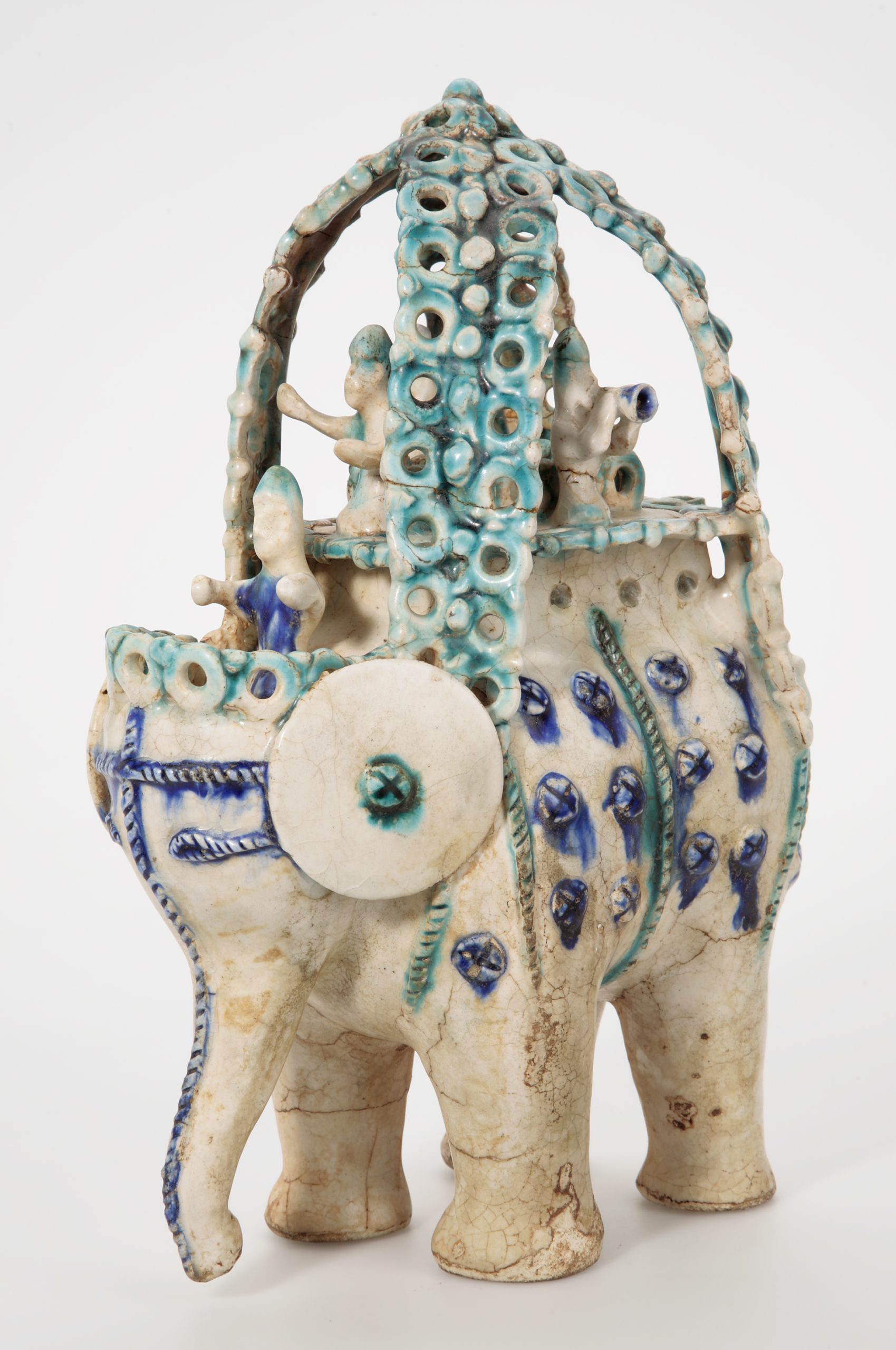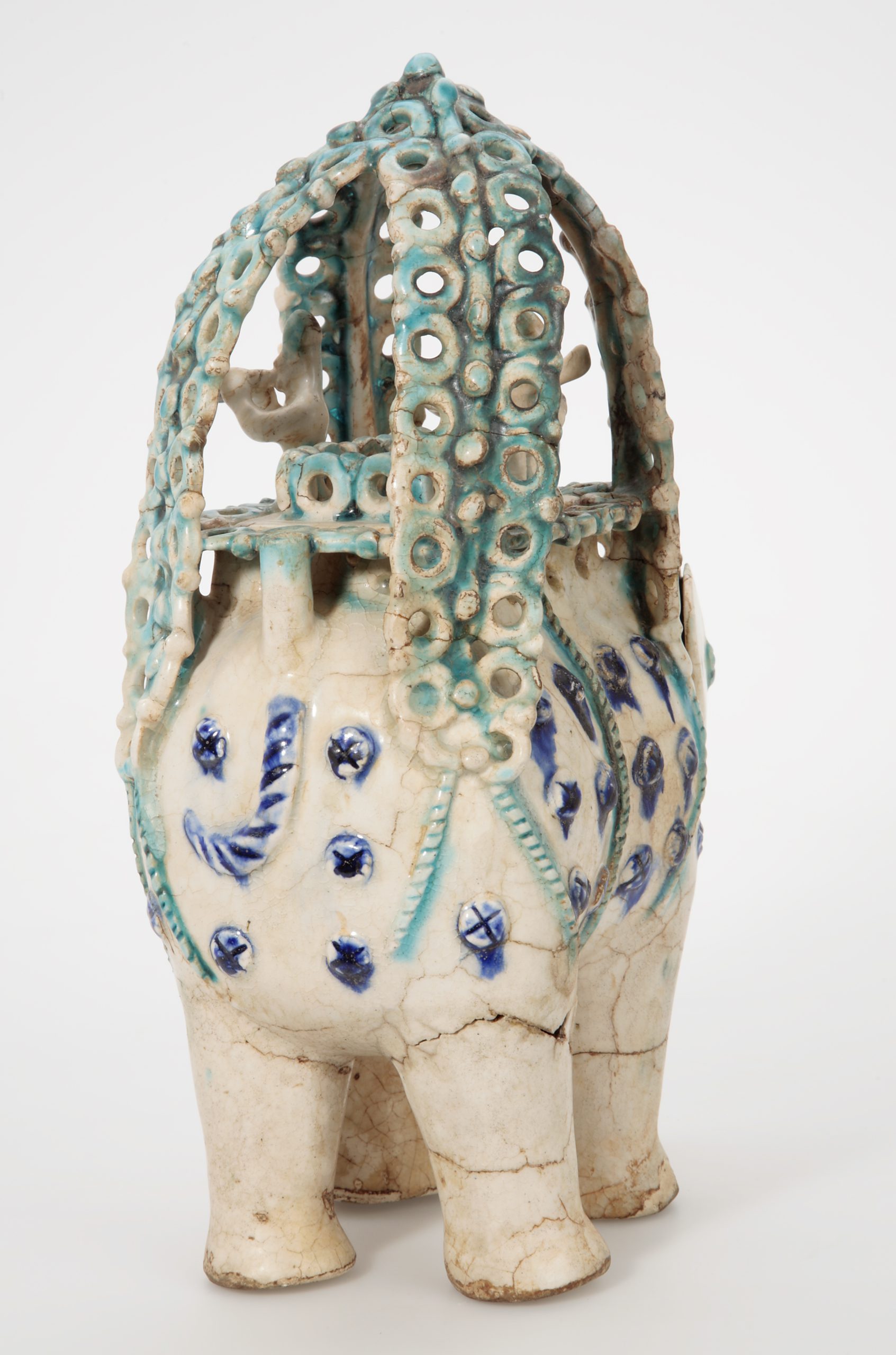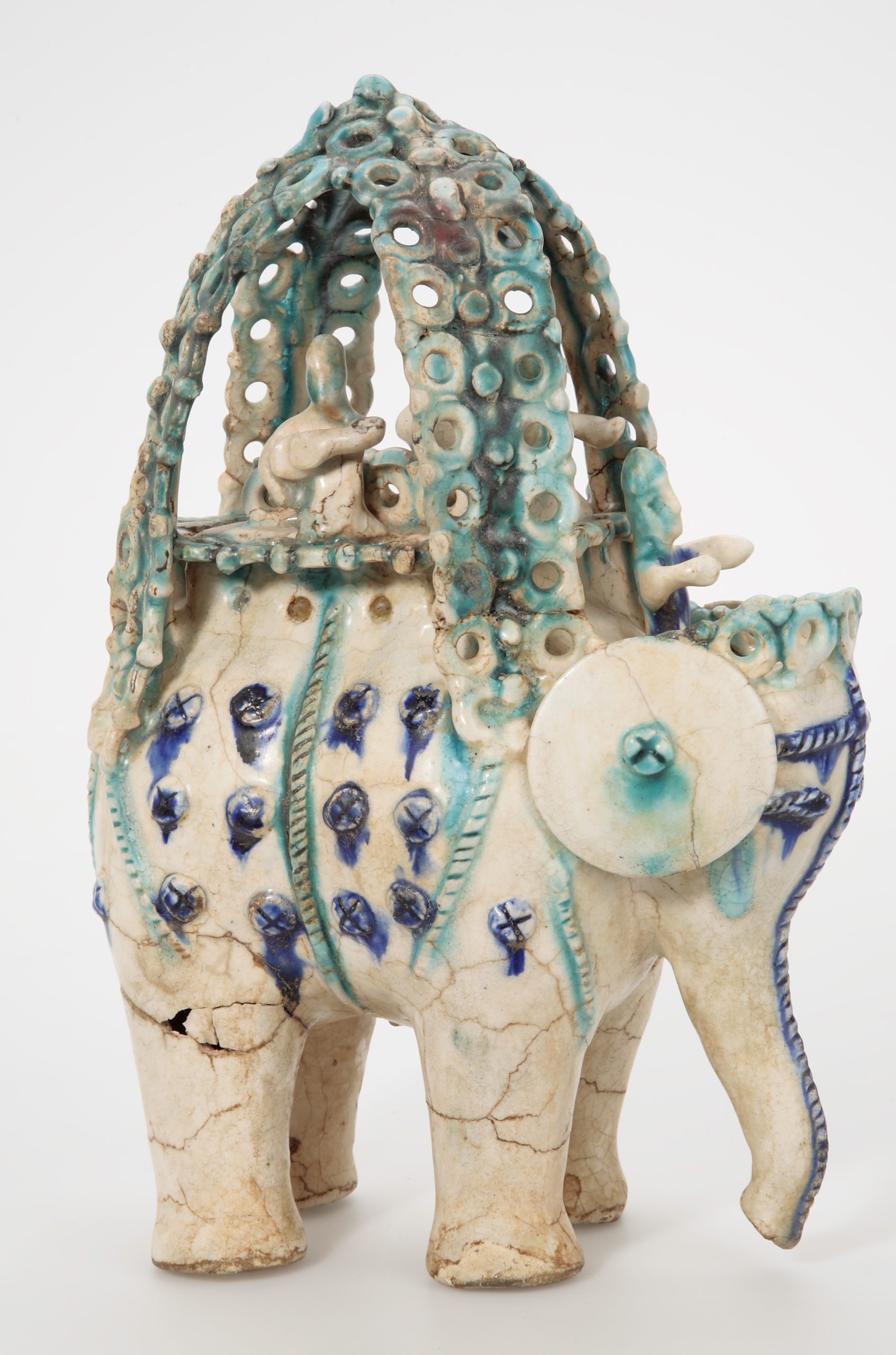

Location: Syria
Materials: moulded stonepaste, covered with a slightly opacified white glaze, with turquoise and cobalt-blue in-glaze staining (laqabi ware)
Dimensions: 29.5 x 20.5 x 13cm
Accession Number: POT 1285
Other Notes:
The large aquamanile is in the form of an elephant carrying a mahout seated in front of a finely decorated howdah in which are a dancer and two musicians – a trumpeter and a lutenist. Round shields cover the elephant’s ears and the bosses on its body are probably meant to indicate defensive cladding. The details are accurately moulded and are often highlighted with coloured glazes. The vessel is filled through a hole in the back, while the trunk serves as a spout.
Laqabi figurines are exceptionally rare, and only three others are known, the most famous of which is the ‘Raqqa rider’, a horseman in mortal combat with a monstrous snake (in the National Museum in Damascus). The horseman is also hollow but is larger, and a socket for a pole in the horse’s stomach suggests it may have been carried as a standard.
Bibliography:
E.J. Grube et al, Cobalt and Lustre. The First Centuries of Islamic Pottery, The Nasser D Khalili Collection of Islamic Art, volume IX, London 1994, cat.286, pp.250–51.
J.M. Rogers, The Arts of Islam. Masterpieces from the Khalili Collection, London 2010, cat.133, p.116.


